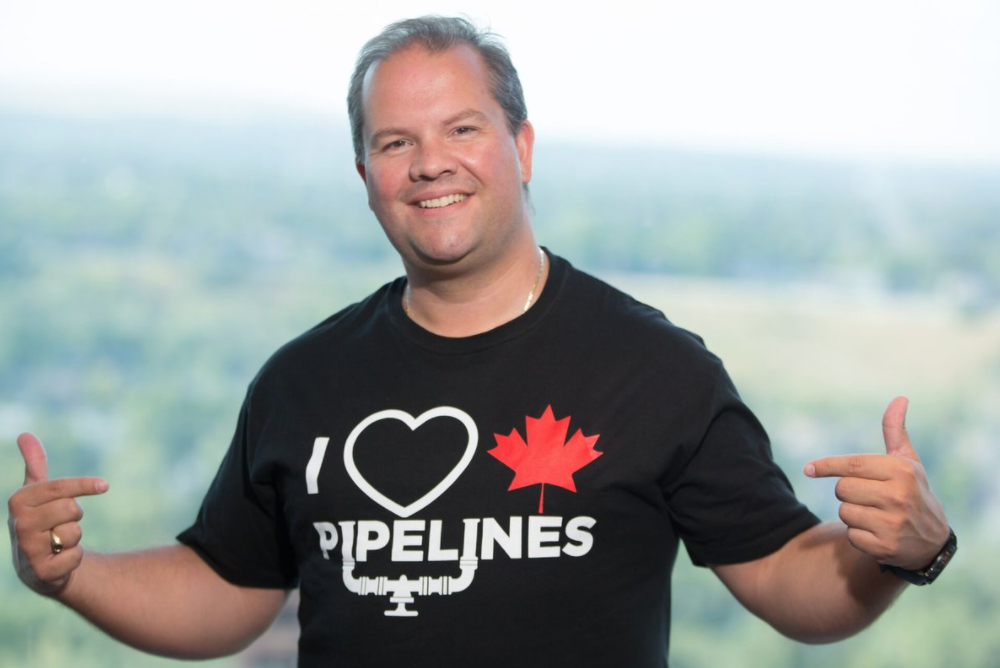A candidate to lead Alberta’s new United Conservative Party says one way to jump−start the province’s lagging oil industry may be to buy a piece of Manitoba.
Jeff Callaway says the province should look at buying the port of Churchill on Hudson Bay and shipping oil there by pipeline.
"This has so many benefits not just for Alberta, but for Western Canada and Canada broadly," Callaway said at the legislature Tuesday.
He says tankers in Churchill could carry oil abroad and fetch a better price for Alberta, which has been running multibillion−dollar deficits in recent years. The province would have to buy the port from its private owners, fix the railway going to it and build a pipeline as well, he explained.
"It’s a small, small investment to make for prosperity in Western Canada," he said, adding that a road would also have to be built to the remote community.
Spring floods washed out the rail line to Churchill and the owner of the port, Denver−based Omnitrax, has suspended operations at the grain terminal and is looking to sell. Omnitrax also owns the rail line and has stated it isn’t interested in putting up the $20 million to $60 million needed to repair the track.
Callaway is also promising to end Alberta’s current tax on carbon for home and business owners if he becomes the United Conservative leader. The levy is used to fund green projects ranging from household devices to large−scale infrastructure such as rapid transit.
It would be an economic and
It would be an economic and environmental disaster. The port is iced in for much of the year and is accessible only between late July and early November. The largest type of oil tanker that can used the Churchill port facilities is a Panamax. The Panamax is a medium range oil tanker with a maximum transport capacity of around 500,000 barrels of light crude oil. That capacity would be largely reduced if it had to carry heavy crude oil.
Building an oil pipeline through that kind of terrain would be really expensive. Permafrost is very unstable, and as the north is warming faster than the south part of Canada, that terrain is going to get even more unstable. It would be just a matter of time before a major spill happened in this remote part of the country, making it almost impossible to clean.
Finally, there are practically no foreign markets actually other than the U.S. for Canada's heavy crude oil. Canadian oil producers can export to foreign countries using Canadian ( e.g. the port of Vancouver and St Lawrence port facilities in Quebec) and U.S. port facilities in the south, such as Houston/Galveston and New Orleans: "Gulf Coast infrastructure (existing and planned) that's used to process oil exports from U.S. ports can also be used by Canadian oil companies to export offshore" (source: www.fraserinstitute.org/blogs/lifting-of-us-oil-export-ban-no-big-deal-f...). But Canadian crude oil exports to countries other than the U.S. remains minimal, around 0.8% of total Canadian oil exports.
Contrary to the Fraser Institute blog (Jan. 20, 2016), the lifting of U.S. oil export represents a major problem for Canadian oil producers who want to develop markets in Europe, Asia and other parts of the world. American oil producers are invading all these potential markets. Following the removal of restrictions on U.S. crude oil exports in December 2015, the U.S. exported crude oil to 26 different countries in 2016 (Netherlands, Curacao, China and Italy being the major area of exports), compared with 10 countries in 2015 (source: U.S. Energy Information Administration, Today in Energy, March 28, 2017).
Notwithstanding the fact that Europe and Asia are awash with cheap easy-to-refine light crude oil from Russia and the Arabic peninsula, Canadian oil producers have to face another major competitor, the United States of America.




Comments